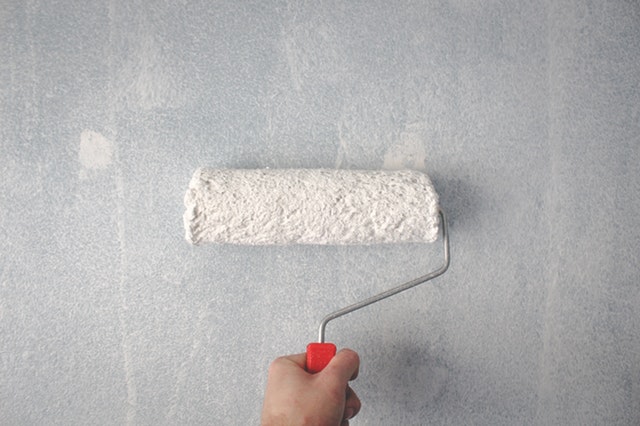What’s Ahead For Mortgage Rates This Week – December 9th, 2019
 Last week’s economic reports included readings on construction spending and multiple labor sector reports including private and public sector jobs and the national unemployment rate. Weekly reports on average mortgage rates and first-time jobless claims were also released.
Last week’s economic reports included readings on construction spending and multiple labor sector reports including private and public sector jobs and the national unemployment rate. Weekly reports on average mortgage rates and first-time jobless claims were also released.
Construction Spending Falls 0.80 Percent in October
Commerce Department reports on construction spending said that spending fell by 0.80 percent to a seasonally-adjusted annual rate of $1.29 million. Analysts expected construction spending to increase by 0.40 percent based on September’s original reading of 0.50 percent growth, which was later revised to -0.30 percent.
Less construction of multifamily homes and apartments caused a decrease in October construction spending. Private construction spending fell by -1.00 percent in October; residential construction fell 0.90 percent as multi-family construction spending fell 1.60 percent after a 2.10 percent dip in September. Construction spending on single-family homes increased by 1.60 percent.
Low mortgage rates, a strong job market, and rising wages contributed to a strong demand for homes. Short inventories of available homes continued to pressure home builders to build more homes; construction of homes jumped 3.80 percent in October.
Mortgage Rates, Mixed, New Jobless Claims Fall
Freddie Mac reported no change in the average rate of 3.68 percent for 30-year fixed-rate mortgages; rates for 15-year fixed-rate mortgages averaged 3.14 percent and were one basis point lower than for the prior week.
Rates for 5/1 adjustable-rate mortgages fell four basis points on average to 3.39 percent. Discount points averaged 0.50 percent for 30-year fixed-rate mortgages and 0.40 percent for 15-year fixed-rate mortgages and 5/1 adjustable-rate mortgages.
First-time jobless claims fell from the prior week’s reading of 213,000 claims to 203,000 claims filed last week. ADP reported 67,000 private-sector jobs added in November.
The federal government’s Non-Farm Payrolls report offset the dismal reading for private-sector job growth. 266,000 public and private sector jobs were added in November and surpassed expectations of 180,000 public and private sector jobs added.
Approximately 55,000 were accounted for as auto workers returned after a strike. 156,0000 public and private sector jobs were added in October. The national unemployment rate dropped to 3.50 percent in November and matched the reading for unemployment posted at the end of 1969.
What’s Ahead
This week’s scheduled economic reports include readings on inflation, retail sales and the post-meeting statement from the Federal Reserve’s Federal Open Market Committee. Fed Chair Jerome Powell is scheduled to give a press conference after the FOMC statement. Weekly readings on mortgage rates and new jobless claims will also be released.

 When someone makes the decision to purchase a home, they often want to add their own personal touch, style, and flair to the home. One of the ways to do this is to paint the home. Of course, painting a home is a significant investment in terms of both time and money. It is important for everyone to keep a few tips in mind to make sure this process goes smoothly.
When someone makes the decision to purchase a home, they often want to add their own personal touch, style, and flair to the home. One of the ways to do this is to paint the home. Of course, painting a home is a significant investment in terms of both time and money. It is important for everyone to keep a few tips in mind to make sure this process goes smoothly. College is expensive and everyone needs to think about how they are going to cover the costs. Some of the costs include tuition, room and board, meals, books, and spending money.
College is expensive and everyone needs to think about how they are going to cover the costs. Some of the costs include tuition, room and board, meals, books, and spending money. Case-Shiller’s National Home Price Index showed 3.20 percent national home price growth in September, which was 0.10 percent higher than August’s reading of 3.10 percent. The 20-City Home Price Index showed the continued impact of exorbitant home prices on both coasts as home price growth slowed in high-cost areas and smaller markets experienced upward pressure on home prices as home buyers were seeking affordable homes.
Case-Shiller’s National Home Price Index showed 3.20 percent national home price growth in September, which was 0.10 percent higher than August’s reading of 3.10 percent. The 20-City Home Price Index showed the continued impact of exorbitant home prices on both coasts as home price growth slowed in high-cost areas and smaller markets experienced upward pressure on home prices as home buyers were seeking affordable homes. When someone is interested in buying a home, there are a number of factors that people need to consider. Some of these include the budget, the size of the home, and the mortgage interest rates.
When someone is interested in buying a home, there are a number of factors that people need to consider. Some of these include the budget, the size of the home, and the mortgage interest rates.